Diseases and pests on currant leaves

If the leaves of your currant began to turn yellow, curl, or swollen burgundy spots began to appear on them, this indicates that the plant has become ill or has been attacked by harmful insects. One way or another, in the presence of such symptoms, the plant needs to be urgently treated so as not to lose a good harvest in the end. How to do this will be discussed in the article.

How to treat red spots?
If brown spots appear on your bush, which bubble and become convex, then this indicates that the plant is damaged by a disease such as anthracnose. This is a common fungal disease that most often begins to intensify in the middle of summer. The fungus develops and spreads especially actively in conditions of increased moisture, heat and heavy rainfall.
Anthracnose is mostly typical for red currants, but sometimes it also affects black ones.
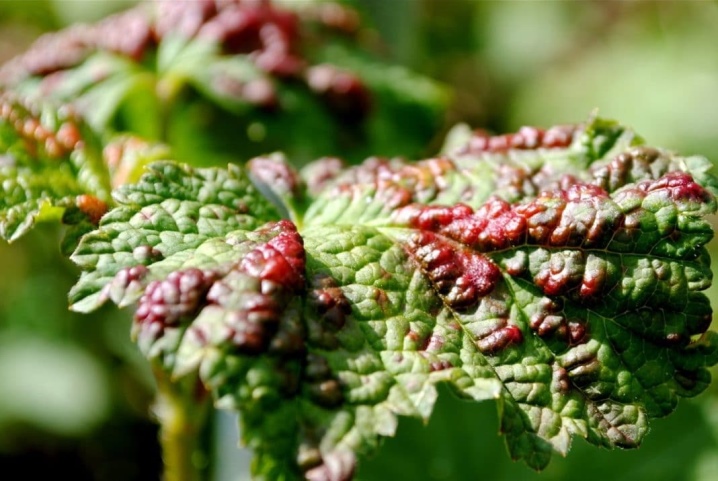
If we talk about the description of the symptoms of the disease, then at first on the foliage of the bush, you can see small purple specks with a diameter of 1 millimeter, which gradually increase in size, spread out and begin to form reddish bumpy bubbles. At the same time, you can see that the lower part of the currant foliage falls off, diseased berries crumble, and the plant's resistance to cold weather decreases sharply.
It is necessary to start fighting this disease as early as possible. To do this, you can resort to using Bordeaux liquid with the calculation of 100 grams of the product per 10 liters of water.

It is necessary to spray the bush immediately after the symptoms of the disease are detected. Re-processing is carried out after harvesting.
Besides, you can process the bush with drugs such as "Abiga-Peak", "Fitosporin" and others. When spraying, strictly follow the instructions, do not neglect dosages, and also observe safety precautions. The use of these funds is an effective way to combat fungal disease, but they contain toxic substances that can harm human health.
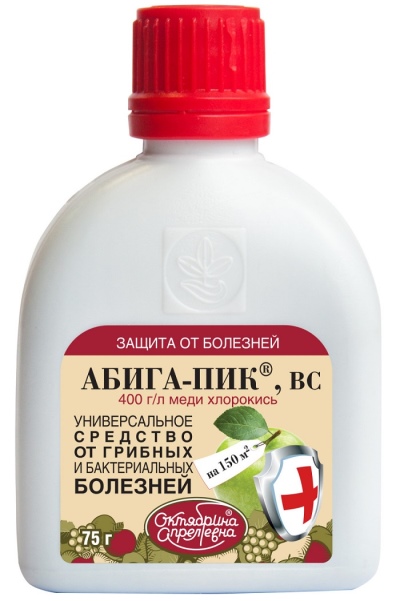
If the situation is not running, then you can resort to using folk methods of struggle. Solutions according to folk recipes can be prepared with your own hands at home, while doing without large financial costs.
However, it should be borne in mind that folk remedies are less effective and are suitable only for preventive treatments, as well as when a disease is detected in the early stages of its development.
So, you can prepare a soda-based solution. You will need a whole glass of the main component, 10 liters of water and a little soap to fix the mixture on the foliage of the bush. All this is mixed and sprayed at intervals of 2 weeks for prophylaxis, and at intervals of a week - when a disease occurs.
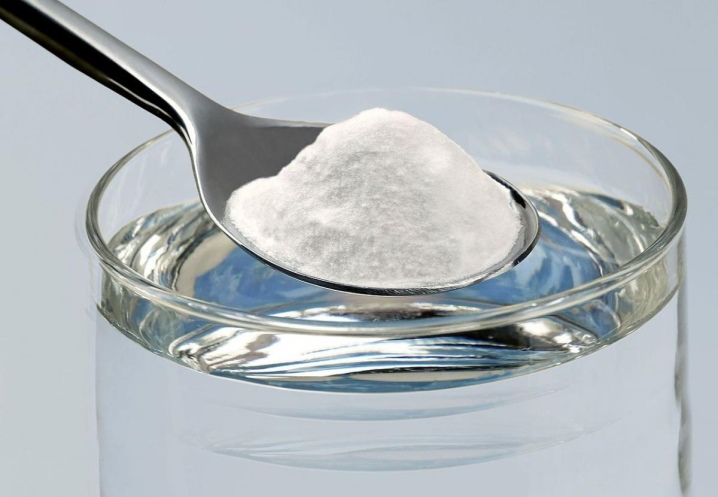
Garlic tincture will be no less effective remedy. For cooking, both arrows of garlic and chives are suitable. It will take only half a kilogram of the main component in crushed form and 5 liters of water. All this must be tightly covered and left to infuse for the whole night. Next, strain the mixture, dilute with 10 liters of water and add a couple of tablespoons of liquid soap. After that, the resulting solution can be sprayed on the plants.
What if the leaves are curled?
If the foliage of your currant bush is collapsing, then this indicates that your plant has become infected with powdery mildew. The disease manifests itself in June or July. Its presence is indicated by the appearance of a whitish bloom, which is easily removed from the foliage. Over time, it becomes more compacted, and those leaves that have been affected begin to curl and deform. The fruits of the bush, not having time to ripen and fill up, fall off.
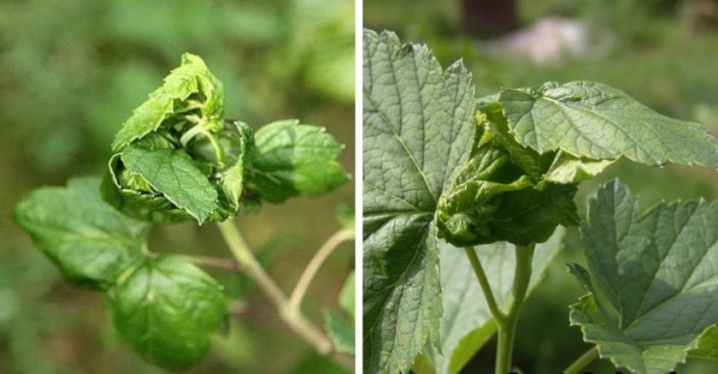
To treat this disease, first of all, it is necessary to get rid of the affected areas of the currant bush., after which it is required to process it with a solution of ferrous sulfate at the rate of 300 grams of the product per 10 liters of water.
When processing, it is required to pay attention not only to the plant and its foliage, but also to the soil under it.
To treat the plant, you can also resort to using a solution of bleach. You will need 2 tablespoons of the product for 10 liters of water.
You can also turn to folk remedies for help. So, for the solution, you can use soda ash. You only need 2 tablespoons of baking soda, the same amount of liquid soap and 10 liters of water. Processing with such a mixture is carried out 2 times at intervals of 7 days.
To combat powdery mildew, a solution based on a liter of milk whey and 10 liters of water is also suitable. With this mixture, the plant must be treated 3 times at intervals of 3 days.
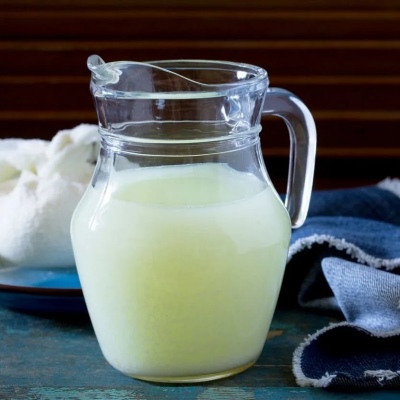
Do not ignore the wood ash-based solution. You only need 300 grams of the component and 5 liters of water. All this is mixed, then put on low heat and brought to a boil. After that, the solution must be cooled, filtered and sprayed with currant bushes. This is done at intervals of 10-12 days, achieving complete destruction of the disease.
You can also fight powdery mildew with horsetail greens. You only need 100 grams of the main component and a liter of water. All this is infused for 24 hours, after which the solution is used to spray the plants.
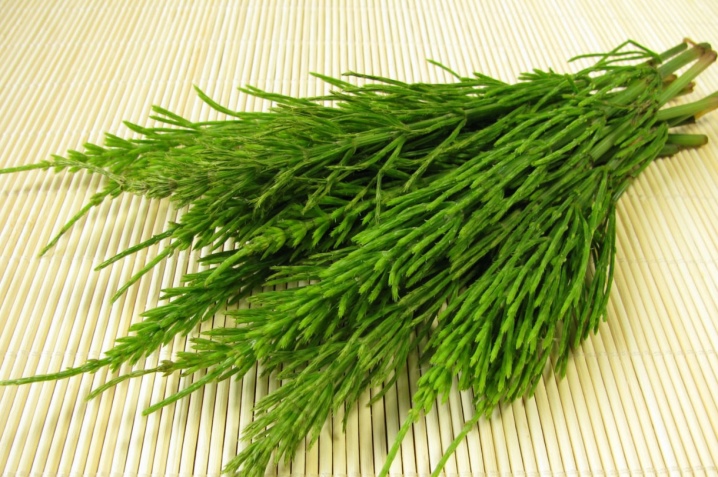
To eliminate the disease, a solution from an aspirin tablet, a tablespoon of soda ash and vegetable oil, a teaspoon of soap and 5 liters of water may also be suitable. All this mixes well, after which a one-time treatment of currant bushes is carried out. Please note that after such spraying, currant berries must be rinsed in water before eating.
Other diseases and their treatment
Goblet rust
There are two types of currant rust: goblet and columnar. The presence of goblet rust in the plant is evidenced by the bulging bubbles of a red color that appeared on its foliage. The disease is transferred to the plant by the wind, as well as by harmful insects.
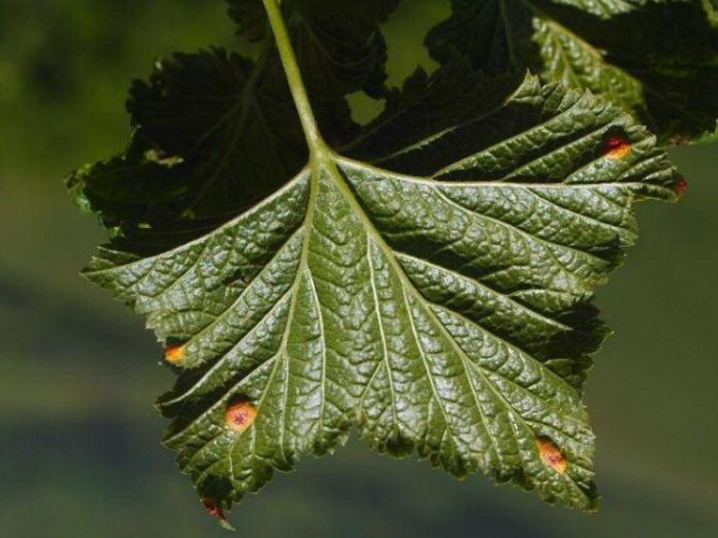
To fight the disease, the plant needs to be treated with "Fitosporin" or fungicides. For this, you can use, for example, Bordeaux liquid with a concentration of 1%. In advanced cases, the plant requires several such sprays, which must be carried out at intervals of 10 days.
White spot
White spot is also called septoria. It can be determined by the spots that appear on the leaves of currant bushes. They are usually brownish in color, have a round or angular shape and are only about 3 millimeters in diameter. Such spots become light over time, and the border around them remains dark. This spotting can also be seen on the fruits of the plant. If the disease is started, then the foliage of the planting begins to fall off.
Most often, black currant is exposed to white spot, this disease is less common on red currant. To fight the disease, it is required to treat the plant with Bordeaux liquid at a concentration of 1% or fungicidal preparations, such as, for example, "Phtalan", "Captan" and "Homecin".
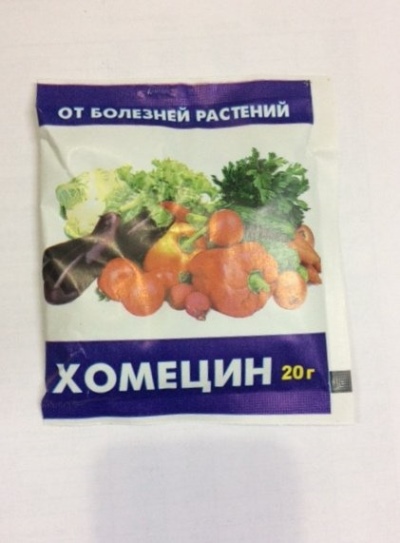
If necessary, spraying with the drug is repeated after 10 days.
Striped mosaic
The fact that a currant bush has become infected with a striped or veined mosaic is evidenced by yellowing along the veins of the foliage. It is a viral disease that does not respond to treatment, but spreads easily and affects healthy shrubs. In order to prevent the disease from developing, it is required to eliminate the diseased currant by uprooting it, and the area where it was grown must be treated with a solution of manganese.
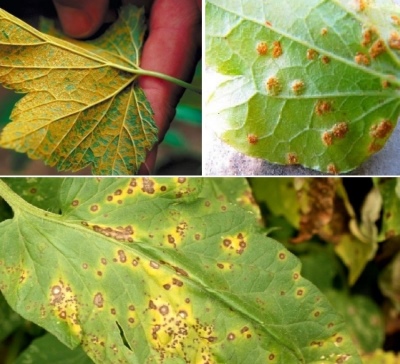
Pests and the fight against them
Leaf-eating parasites are another possible reason that the leaves of your plants have become covered with various spots and began to actively wither.
Most often, currants are attacked by such a harmful insect as aphids. Because of this parasite, reddish or yellow blisters appear on the foliage. Over time, diseased leaves dry and fall off.
Aphids actively reproduce and are able to give as many as 7 generations in one season. It feeds on plant juices of the plant, is able to eat and destroy most of the plants, if not dealt with.

When a parasite is found, it is impossible to hesitate. The plant needs to be treated with agents such as Actellik or Karbofos. You can also use various solutions made according to folk recipes, but it is recommended to use them only in cases where the aphids have not yet had time to breed.
Firefly is another parasite that damages currant bushes. They are small brownish butterflies that are generally harmless, but their larvae pose a huge danger to the plant. Caterpillars of the butterfly eat the berries of the bush, entwining them with cobwebs. One such parasite at the caterpillar stage is able to eat about 15 currant fruits.
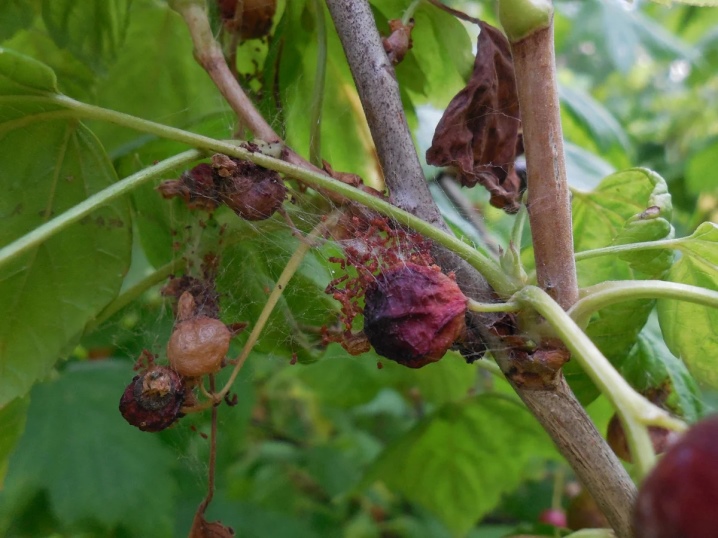
In order to prevent the appearance of the parasite, in early spring it is required to cover the soil around the currants with something like linoleum. This must be done so that butterflies, which could spend the winter in the upper layers of the earth, could not get out. This cover is usually removed by the time the shrub begins to bloom.
In addition, to combat the parasite, you can also resort to using various fungicides and folk remedies.
Another common problem with red and black currants is mites. They are of two types - arachnoid and currant kidney.

The first type of parasite manifests itself as white blotches on the foliage of the bush, which eventually discolor. If there are many such mites, then the leaves begin to look like marble, after which they dry and fall over time.
The second type of mite harms the fruit buds, due to which the number of fruits ultimately drops sharply.
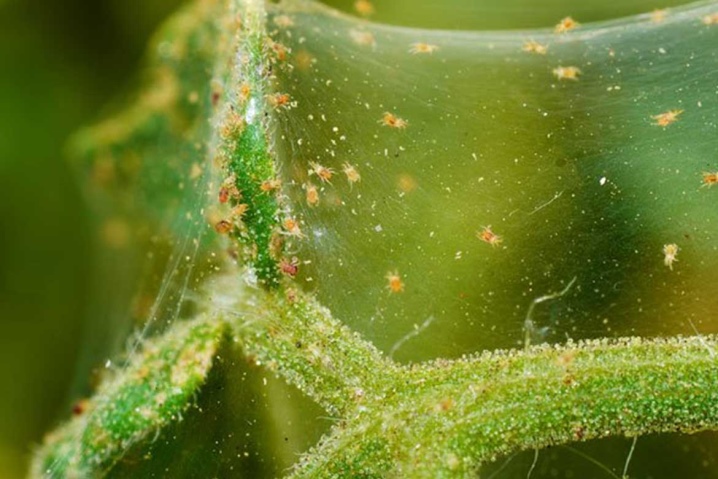
In addition, the parasite also carries various diseases, due to which the plant suffers even more.
Removing a harmful insect from a plant requires the use of chemicals. Such products as "Karbofos", "Phosphamide" and colloidal sulfur are perfect. In addition, various folk remedies can also be used for prevention.

Prevention measures
In order to prevent the occurrence of leaf-eating pests or diseases, it is necessary to take certain preventive measures.
So, first of all, it is necessary to regularly examine the shrubs for the presence of symptoms of a particular disease or parasites. This will help to take certain steps in a timely manner and save the plant, without resorting to drastic measures.
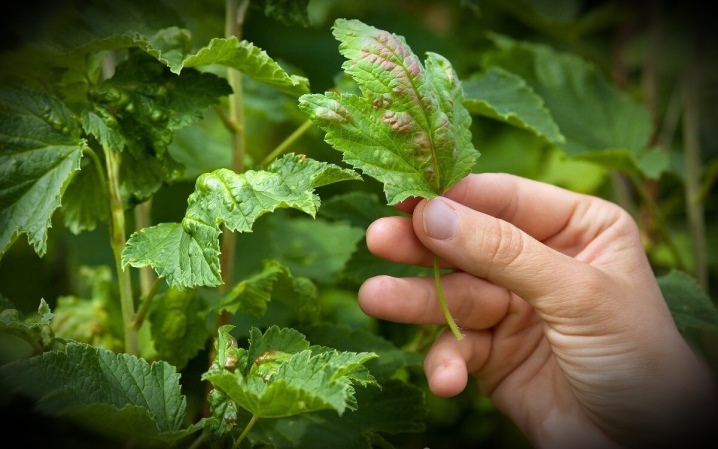
It is also recommended to provide the plant with good care. Try to control the amount of moisture introduced into the soil, avoiding drought or waterlogging. Pay special attention to fertilizers, their excess should also not be allowed. It is also recommended to periodically prune the bushes to ensure adequate air circulation. For the same purpose, when planting a plant, a certain distance must be observed between them.
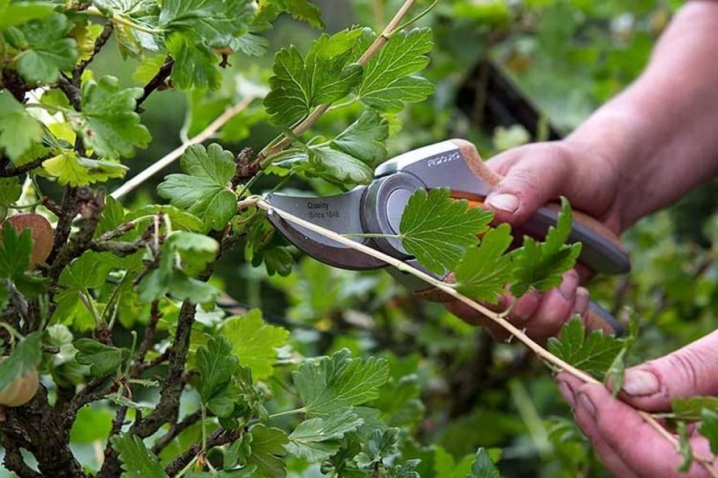
Cleaning old plant residues, timely treatment of plants with medicinal solutions for preventive purposes, as well as disinfection of garden appliances help maintain plant health.
Observing all these simple preventive measures, you will not have to struggle long and painfully with parasites and diseases., your shrubs will grow healthy, as a result, they will please with a good and rich harvest.
How to deal with pests on currants without chemistry, see the video below.













The comment was sent successfully.